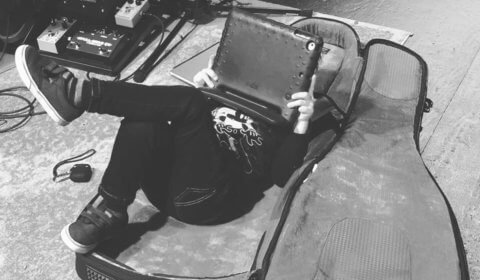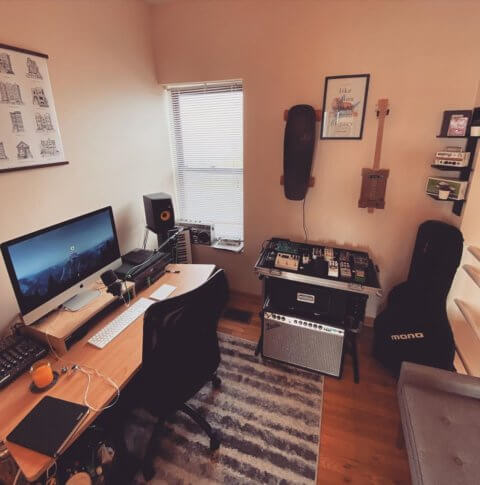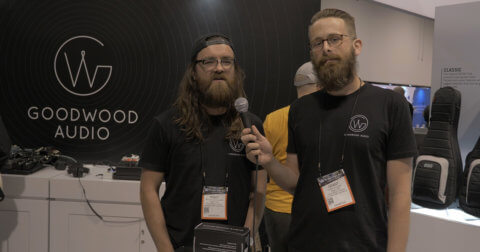If you were there with us at Winter NAMM 2018 in Anaheim you must have noticed a booth right next to ours – guest stars, pedalboard aficionados, and our friends – Goodwood Audio.
Manned by Grant Klassen and Michael (Mikey) Woodward, the Goodwood team have specialized in cables, custom boxes and full custom pedalboard setups, and in 2018 launched a full pedal range and a new range of junction boxes. They’re based in Sydney, Australia, but their knowledge and intricacies have created custom setups for artists worldwide, including Dead Letter Circus, Nigel Hendroff of Hillsong, Jeffrey Kunde of Jesus Culture, and Mateus Asato.
To call them experts will be a massive understatement – the boys know their way around any pedalboard setup, and they’ve got you some awesome advice for your own rig.
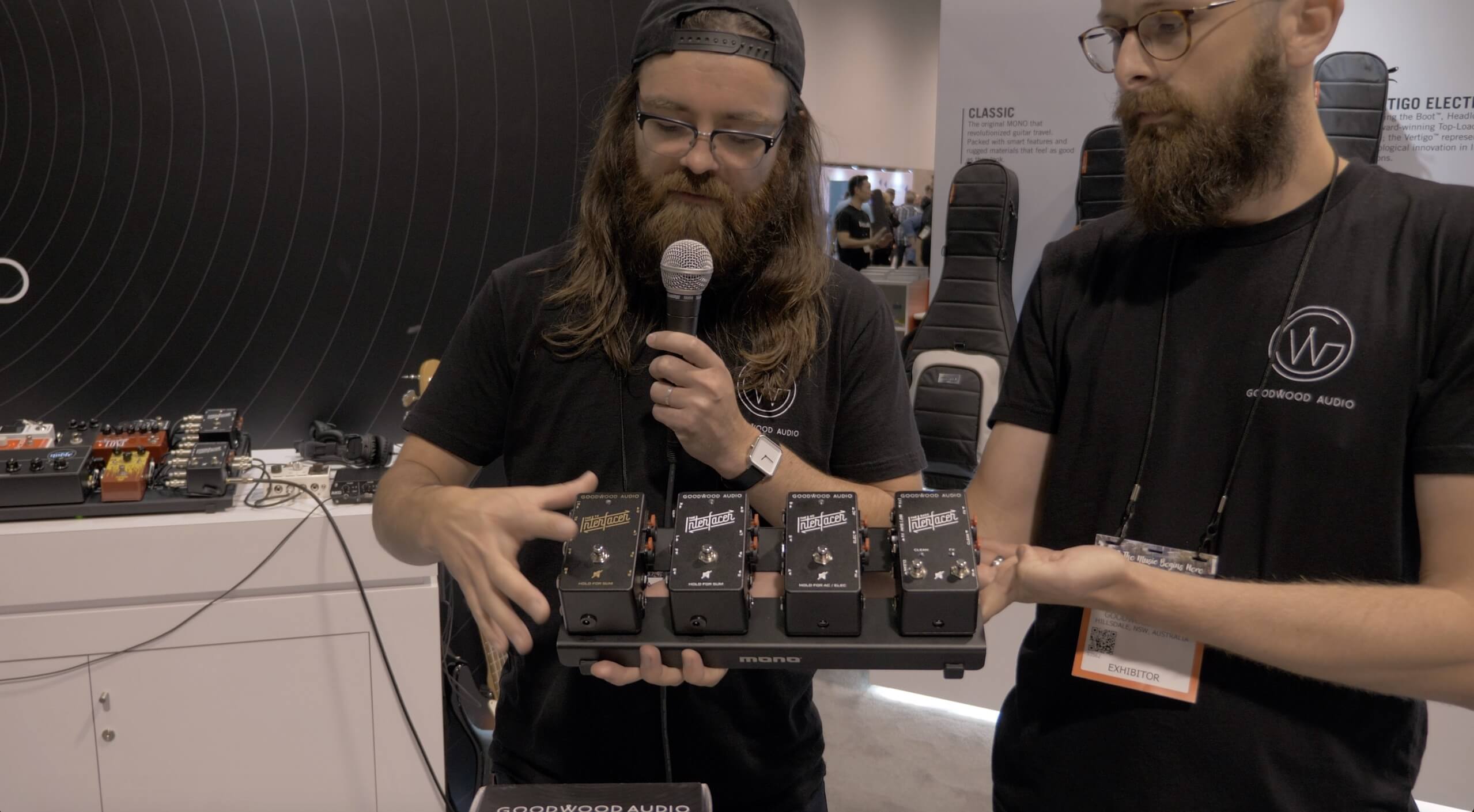
You’re looking at an empty pedalboard. What do you reach for first?
Mikey: Usually what I do is start with the power. An angled board is easier because there’s more flexibility underneath. For a flat board, setting power up on top already takes up some space. But you have to have power, so we start with that.
And then I look at junction boxes, and typically the input junctions are gonna be on the right-hand side, as close to the performer as possible, and they might want their output junction on the same side or top left, depending on what the stage flow might look like.

Grant: And the reason for bottom right – right-handed guitar player, cable comes out of the bottom right of the guitar, goes to the right of the pedalboard. If they’re a left-handed guitar player, you’d want it on the bottom left of the pedalboard so it’s not crossing in front of them when they play.
Mikey: So I do power supply, which can move, but I’ve put it on so space is taken up. Junction boxes typically don’t move too much, and then from there, I’d go with the switcher front and center. Then volume pedal, expression pedal, tap tempo pedal that needs really easy access. For a left volume tapping person, it’s on the left, and vice versa. That sets up the perimeter of the board, and with the space that is left, I start putting everything else in. Typically what I’d do with a looping setup is have pedals on the board in the order that they appear, and that means having shorter cables and lesser crisscrosses of cables. Having shorter cables will be better for sound, plus it’s lighter and easier to troubleshoot, rather than having a rat’s nest going on; that’s a nightmare, so we try to keep things as neat and straight as possible.
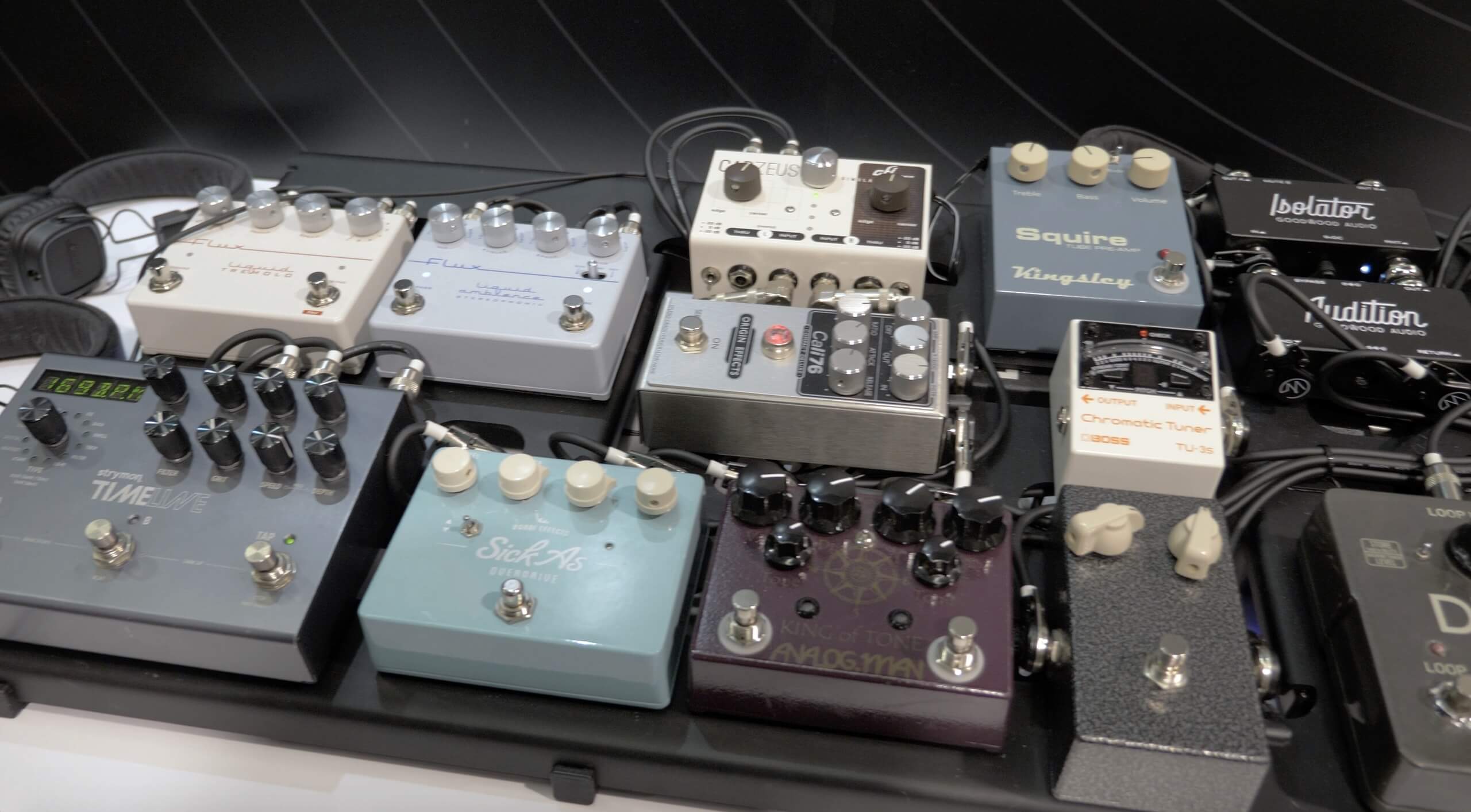
Do you have a general rule of thumb when deciding on the order of your signal chain?
Grant: There are endless opinions on this. There is no monopoly on the right or the best way to run your signal chain. There is a general rule of thumb and this was proved very true with a guy named Luke Palmer from Dead Letter Circus. He runs his whole board – reverbs, delays, overdrive all that – but at the very end of his chain, he puts a tremolo pedal. I was shocked, I’d never heard of that before; it’s not conventional, but he gets super crisp and really tight tremolo. It’s a brilliant idea, but not conventional; it “breaks the rule”. So there aren’t any right or wrongs; at the end of the day it depends on what the musician likes, what they have found works for them, and after that, you can follow any convention you want or don’t want.
Mikey: One thing about boost pedals and gain structure and overdrive; if you boost into an overdrive, you’ll get more value, but you’ll also get more gain or saturation; it’s just the same as pushing the front end of the amp. If you put the boost pedal after the overdrive, you’ll get a bigger jump in volume with the same saturation from that pedal. You may get extra saturation from the front of your amp but boost before overdrive = some volume change and more gain. Boost after overdrive = a lot more volume, quite possibly less gain.
The same concept can be said if you’re just using an amp; boost into an amp gives you more gain, boosts in the effects loop of an amp, which is post pre-amp, is going to give you a volume increase which is good for a solo.

Grant: People often ask ‘what order should I put my overdrives in’. Generally speaking, your overdrive sound will sound most like your last overdrive that is turned on. So if you love your Boss OD-1, and you just can’t get enough of it, put it towards the end of your chain.
If you love the Sick As, put it closer to the end of your chain, or at least start there. But if you don’t stack overdrives, it’s not that big a deal what order they’re in. If you stack overdrives and turn on both OD-1 and OD-2, you’ll sound most like OD-2.
Mikey: It’s the same with delay and reverb; reverb into delay can sound awesome, but everyone does delay into reverb nicely.
Grant: Same with volume pedals. If you put your volume pedals in the beginning of the chain and into your overdrives, you’re going to get more gain and volume as you turn it up.
Mikey: And tuners as close to the beginning as possible. And buffers aren’t bad!
Grant: Don’t be bogged down by rules. Break them and see what you like!
Inspired and need a pedalboard for your own awesome rig? Check out all MONO pedalboards here.
And for more content like this one, subscribe to our blog here.

